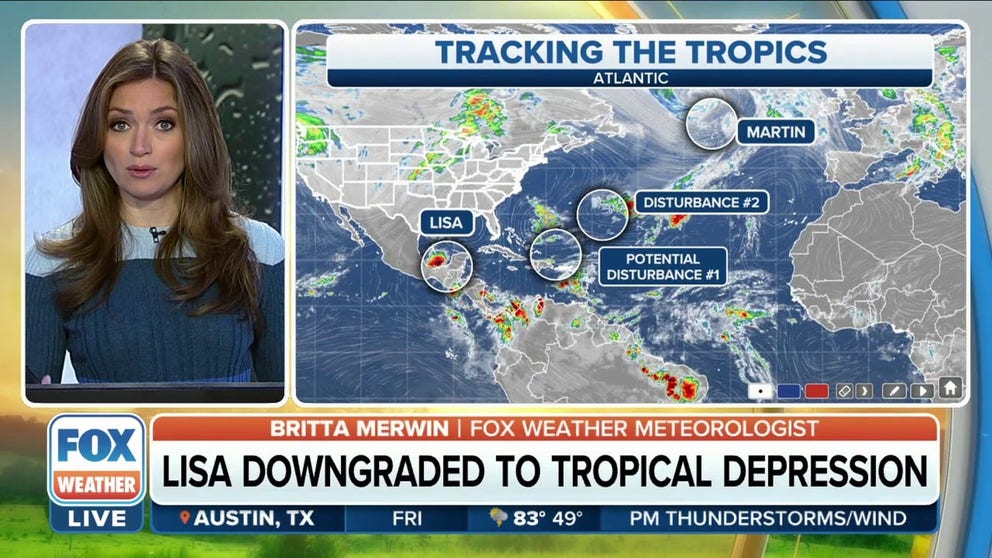Martin becomes large, powerful post-tropical cyclone as it churns through North Atlantic
Lisa previously joined Martin as a hurricane, marking only the 3rd time since 1900 that there had been 2 simultaneous hurricanes in November in the Atlantic.
Two areas to watch in the Atlantic with low development chances
There are two areas to watch in the Atlantic with low development chances.
November is the final month of the official hurricane season, and it started by checking off another name on the Atlantic list: Martin.
Tropical Storm Martin formed in the central North Atlantic on Tuesday, becoming the 13th named storm of the 2022 Atlantic hurricane season. On Wednesday, it became the seventh hurricane of the season. Martin transitioned into a powerful post-tropical cyclone Thursday afternoon.
The National Hurricane Center assigns names to tropical storms and hurricanes from one of six rotating lists. Tropical Storm Lisa, the 12th named storm of the season, formed on Monday and later intensified into the season's sixth hurricane on Wednesday morning. Lisa has since weakened back to a tropical storm over Central America.
NOVEMBER IS THE FINAL MONTH OF ATLANTIC HURRICANE SEASON; HERE'S WHAT TO EXPECT
This was only the third time since 1900 that there had been two November hurricanes simultaneously in the Atlantic. The previous years were 1932 and 2001.
Here's the latest information on Martin.
Where is Post-Tropical Cyclone Martin?
As of Thursday afternoon, Post-Tropical Cyclone Martin was located about 940 miles north-northwest of the Azores, an island chain in the North Atlantic Ocean, and was headed north-northeast at 58 mph.
Martin had maximum sustained winds of 80 mph, which would give it the force of a Category 1 hurricane on the Saffir-Simpson Hurricane Wind Scale.

(FOX Weather)
Where is Post-Tropical Cyclone Martin headed?
Martin poses no threat to the U.S. The FOX Forecast Center expects it to continue on its northward track through Friday before winds weaken to tropical storm force. Martin is expected to move east toward Ireland and Scotland, where it could create rough weather this weekend.
"As we get into Sunday and early next week, it is going to be getting very close to Ireland and Scotland," FOX Weather meteorologist Britta Merwin said. "In fact, part of Scotland is actually in the cone, so we could see some inclement weather moving in for the U.K."
As it grows larger, Martin will cover a wide area in the North Atlantic Ocean and pose a threat to shipping interest in the region.
WHAT IS A POST-TROPICAL CYCLONE?

(FOX Weather)
Tropical storm vs. subtropical storm vs. post-tropical cyclone
A tropical storm is a tropical cyclone with maximum sustained winds between 39 and 73 mph.
A subtropical storm is sort of a hybrid storm, meaning it has characteristics of both a typical low-pressure system and a tropical cyclone. However, unlike the typical low, a subtropical storm gets a lot of its energy from warm ocean water and has maximum sustained winds of at least 39 mph.
WHAT'S THE DIFFERENCE BETWEEN A TROPICAL STORM AND A SUBTROPICAL STORM?
A system becomes a post-tropical cyclone once it loses its tropical characteristics. However, these types of storms can still pose a danger with heavy rain and high winds.
If either of these types of systems generates winds of at least 74 mph, they become hurricanes.
